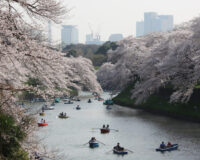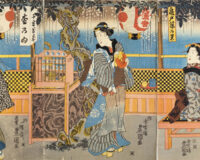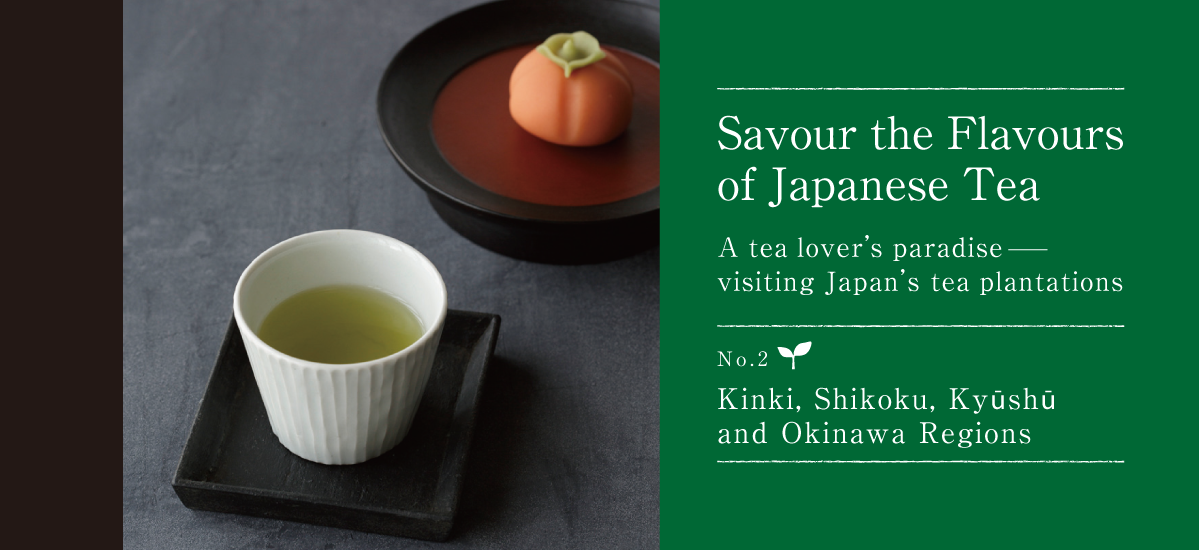
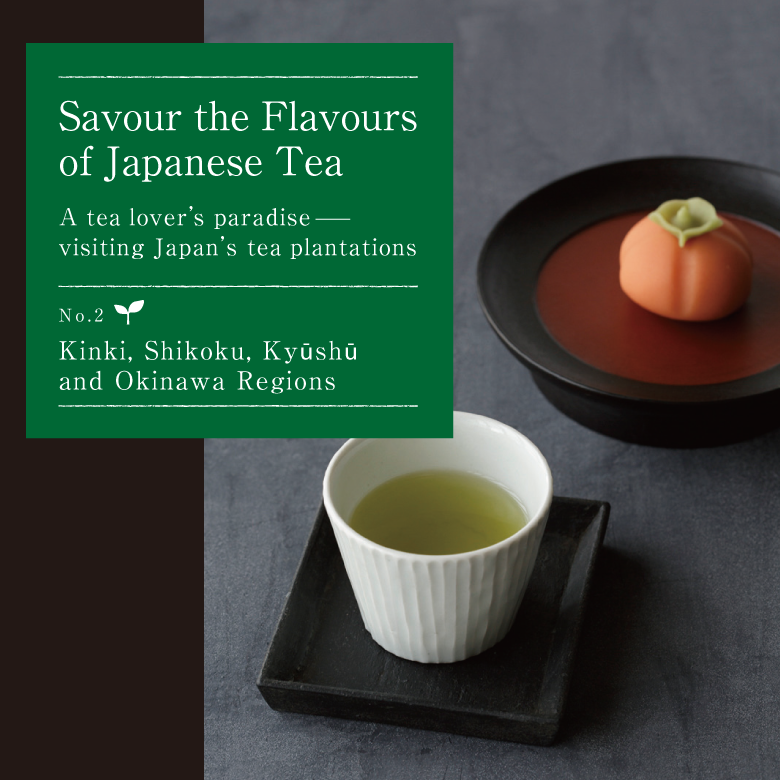
Tea, or o-cha in Japanese, is an integral part of everyday Japanese life and the tea grown in each region of Japan has its own unique characteristics. In this series we introduce well-known varieties of tea from all over Japan.
Text : Sasaki Takashi / English Version : Judy Evans
Keyword : Uji-cha / Kyoban-cha / Yamato-cha / Awaban-cha / Goishi-cha / Farming / Yame-cha / Nihon-cha / Ureshino-cha / Horticulture / Kumamoto-cha / Nambu Region / Miyazaki-cha / Japanese Tea / Kagoshima-cha / Mandokoro-cha
Kinki and Shikoku Regions
The seeds of the Japanese tea tradition – planted by Zen master Eisai and nurtured by Buddhist monk Myōe
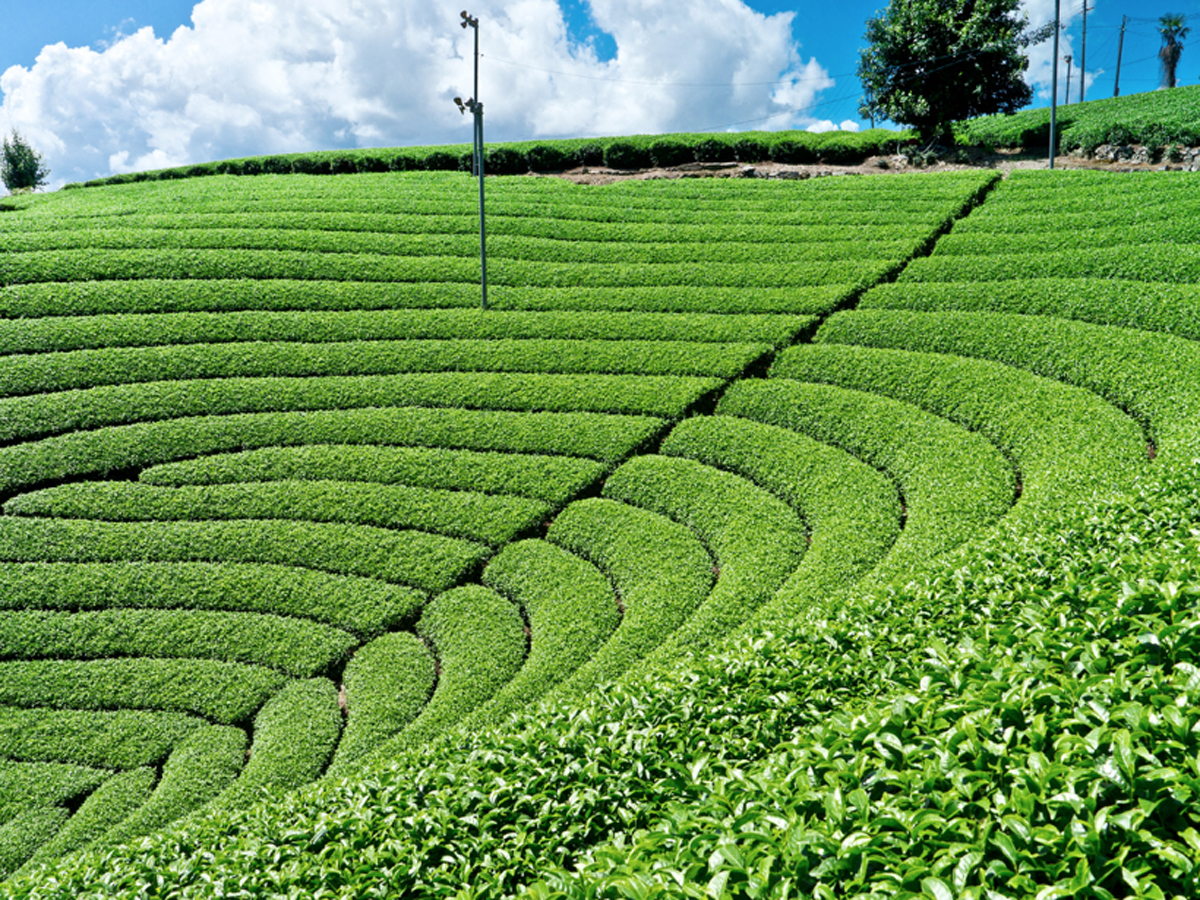
Kyōto has been the driving force behind Japanese tea culture since its inception. Seeds of the tea bush were brought to Japan, together with Zen Buddhism, by Zen master Eisai, who popularized tea as a cure-all and the secret to longevity in the early Kamakura Period (1185 – 1333). The precious seeds were later entrusted to Shingon scholar Myōe, who is believed to have begun full-scale tea cultivation at Kōzan-ji, the temple he founded in Kyōto. Before long, cultivation had spread to Uji. During the Muromachi Period (1336 – 1573), Uji became Japan’s leading producer of tea under the patronage of shōgun, Ashikaga Yoshimitsu.
While it would be natural enough to assume that tea cultivation began around Uji and other parts of Kyōto, tea cultivation at Yamato Kōgen in Nara Prefecture is said to predate that in Kyōto. Poet and Buddhist monk Kūkai is thought to have returned in 806 from a study mission to Chang’an, the capital of China’s Tang dynasty, with seeds of the tea plant. Tradition has it that he planted these seeds at Haibara-Akabane in what is now Uda City, Nara Prefecture, and gave instructions on how the tea was to be harvested and processed.
While not on the same scale as the Kyōto area, nor as well-known, tea cultivation gained a firm foothold across the Seto Inland Sea on the island of Shikoku. There, in the mist-shrouded mountains of Kōchi Prefecture where temperature differences can be extreme, steep mountain sides were terraced to allow for the cultivation of a tea with distinctively different characteristics from that grown in Kyōto and Nara.
Mandokoro-Cha, Shiga Prefecture
‘Mandokoro-cha’ refers to tea grown in and around Mandokoro-chō, in Higashiōmi, Shiga Prefecture, adjacent to Kyōto. Traditional local varieties are still cultivated here on the eastern side of Lake Biwa, where tea bushes growing on the hillsides look like rows of plump steamed buns. This rustic local variety has a fresh, robust flavour and a pleasant aftertaste.
Uji-Cha, Kyōto Prefecture
Uji has long been known as Japan’s foremost tea region, and the rich flavour of uji-cha set the historical benchmark for Japanese tea. During the Edo Period (1603 – 1868), the method for cultivating high quality gyokuro-cha was developed. This involves covering the tea bushes with shade cloth for at least twenty days prior to harvest, resulting in a sweeter, less astringent flavour.

Kyōbancha, Kyōto Prefecture
Once the gyokuro-cha, ten-cha (used for powdered matcha) or sen-cha (regular green tea) leaves have been harvested, the leaves and stalks that subsequently grow are used to make hōji-cha, a roasted tea. Here in Kyōto this is known as kyōbancha, and is the everyday tea of choice for most locals. After steaming, the leaves and stalks are dried without being rolled, then briefly dry-roasted on a hotplate. Kyōbancha is smokey and aromatic, full-bodied and fresh. Being low in caffeine, it is a suitable drink for everyone, including children and the elderly.
Yamato-cha, Nara Prefecture
Yamato-cha is grown in the mountainous Yamato Highland area of north-eastern Nara Prefecture. Tradition has it that the seeds were planted over 1200 years ago by poet and monk, Kūkai, who brought them back from T’ang Dynasty China. Yamato-cha has a pleasantly mild flavour.
Awabancha, Tokushima Prefecture, Shikoku
Awabancha is a fermented tea produced in Kamikatsu-cho and in the Naka-cho Aioi district of Tokushima Prefecture, in Shikoku. New leaves are left to grow until summer before harvesting. The harvested leaves are either steamed or boiled, then pummelled before being packed tightly into barrels, weighted down and left to ferment for two to four weeks. When the lactic fermentation process is complete, the leaves are sun-dried and packaged for consumption. The resulting tea has an invigorating sweetness with very little astringency.
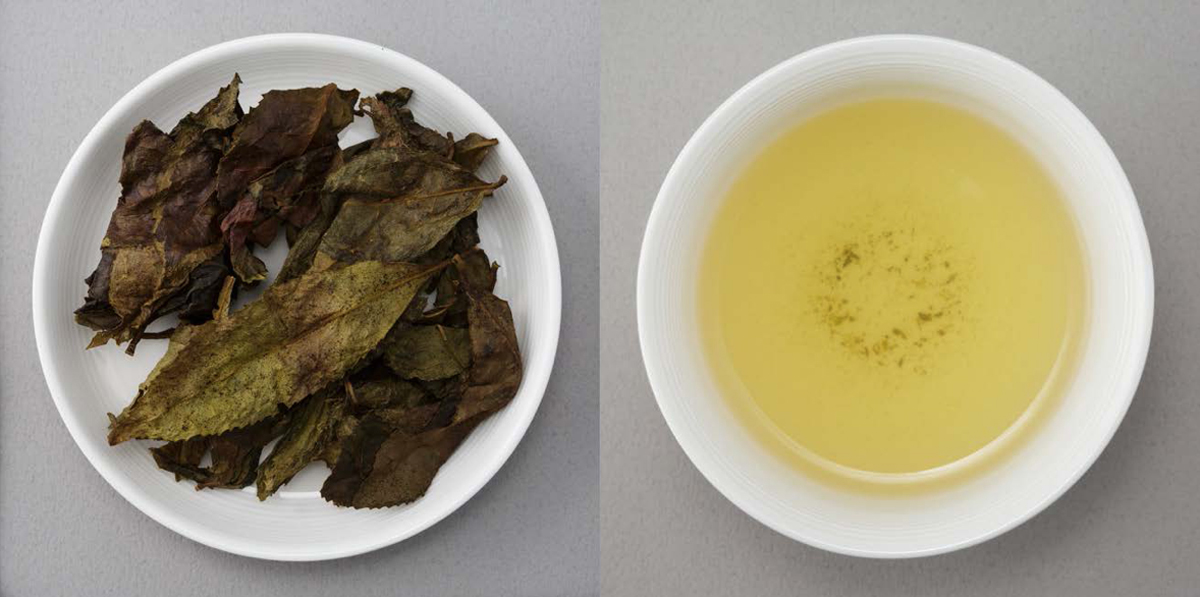
Goishi-cha, Kōchi Prefecture
Goishi-cha is a highly unusual tea. Although a type of awabancha (above), it differs from regular awabancha in that it is fermented twice. First, the steamed tea leaves are heaped onto a mat, then covered and left to form a mould in a process resembling the early stages of composting. The leaves are then compressed into barrels and lacto-fermented as with regular awabancha. After several weeks, the compressed fermented tea leaves are removed from the barrel in large blocks, which are then cut down into smaller pieces about one inch square and dried outside in the sun on straw mats. The small blocks of goishi-cha set out to dry on these mats resemble playing pieces from the Japanese board game, go, which is how the twice-fermented goishi-cha gets its name. Goishi-cha has a distinctive acidity, and can either be enjoyed as a tea or used to make cha-gayu, a kind of rice gruel.

Kyūshū and Okinawa
Entry points for tea spreading into Japan from China
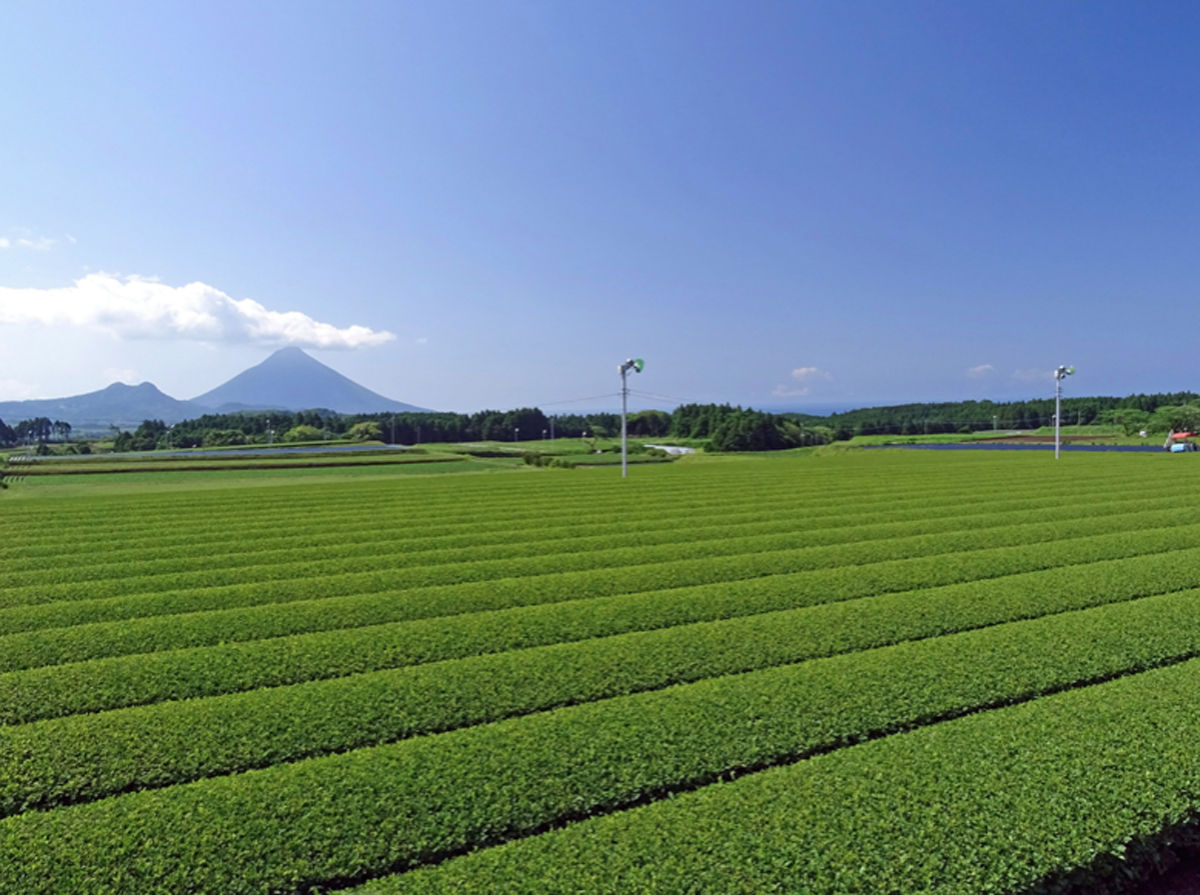
The island of Kyūshū, with its proximity to the Asian continent, played an important role in the history of Japanese tea. Names such as Saichō, Kūkai and Eisai may figure prominently in the history of tea, but these priests and scholars were not the only ones to have brought tea to Japan. Kyūshū has served as a gateway for regular exchanges with the Asian continent for thousands of years, and in the same way that rice cultivation in pre-historic times made its way from the Korean Peninsula or across the East China Sea into Kyūshū, tea is also thought to have arrived here first.
Not only was tea first grown in Kyūshū, but it was from Kyūshū that Japanese tea was introduced to the West. Towards the end of Japan’s feudal era (pre-1868), tea known today as Ureshino-cha was exported from Saga and Nagasaki Prefectures to Europe from Dejima, the Dutch trading post in Nagasaki.
Even today, the way tea is processed and enjoyed in Kyūshū is distinctly different from the Kyōto or Tōkyō regions, retaining traces of traditional methods introduced directly from China. For instance, while the leaves of Japan’s regular green tea, sen-cha, are steamed to prevent them from oxidizing and spoiling, Kyūshū’s kamairi-cha is dry-roasted in a large iron pan to prevent oxidation, rather than being steamed. And unlike sen-cha, the leaves of kamairi-cha are not rolled. Another type of tea, tamaryoku-cha, is steamed to halt the oxidation process, but like kamairi-cha, the leaves of tamaryoku-cha are also not rolled.
According to an old song extolling the virtues of Japan’s top tea regions, the big three are ‘Shizuoka for colour, Uji for fragrance and Sayama for flavour’. Leaving aside the possibility that this song was written to promote Sayama tea, it ignores the fact that the second biggest tea producing region in Japan is actually Kagoshima, with other areas in Kyūshū such as Miyazaki, Fukuoka, Kumamoto and Saga providing pretty stiff competition for Uji and Sayama in terms of amounts produced. In Kyūshū’s warmer climate, the first harvest comes early in the year and the harvest period is longer. Some regions achieve as many as four harvests per year, meaning a greater yield for a given area of land, which contributes to Kyūshū’s high production rate.
Yame-cha, Fukuoka Prefecture
Yame-cha is a brand of tea produced in the Chikushi Plains of southern Fukuoka Prefecture. The gently sloping land here is frequently shrouded in fog and blessed with conditions naturally conducive to the cultivation of high quality tea. The special Yame gyokuro tea grown here is plucked by hand under shade covers that prevent direct sunlight from reaching the leaves.
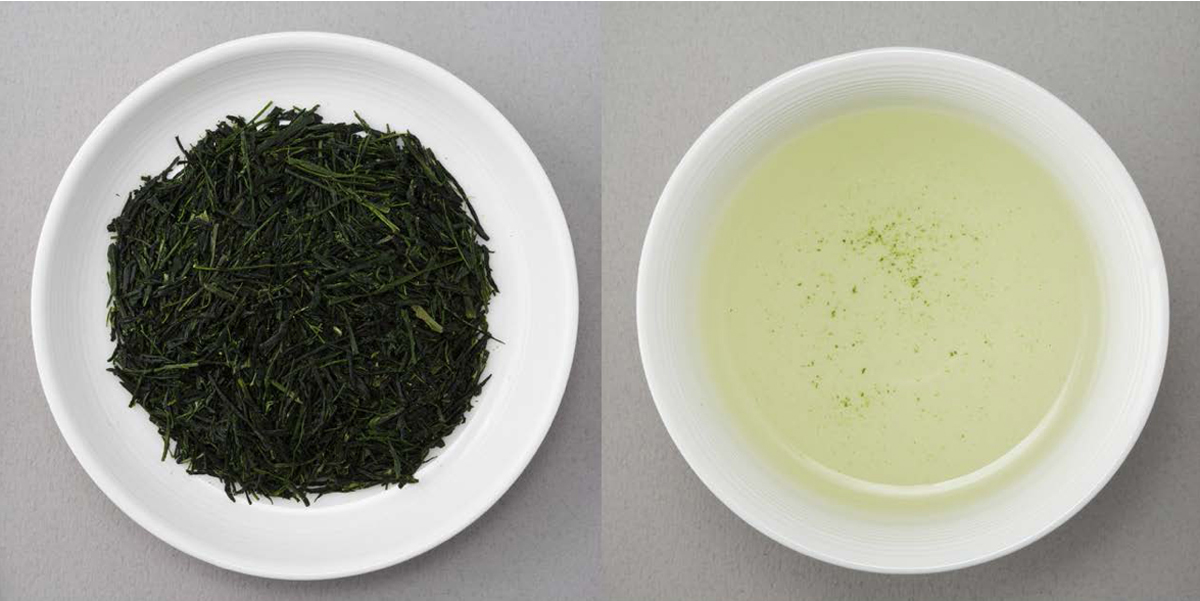
Ureshino-cha, Saga Prefecture
Ureshino-cha is the collective term for tea grown in the area centred on the district of Ureshino-chō in southern Saga Prefecture, and also parts of Nagasaki Prefecture. Most Ureshino-cha is steamed tamaryoku-cha, with this area being Japan’s largest producer of this style of tea. The tea leaves are dried in a tumbler, and are finely twisted and wavy. The flavour is refined with very little astringency and a mellow finish.
Kumamoto-cha, Kumamoto Prefecture
A wide range of tea styles are produced in Kumamoto Prefecture, including sen-cha (regular green tea), dry-roasted kamairi-cha, kōcha (black tea) and steamed tamaryoku-cha – a quarter of the country’s tamaryoku-cha is produced here. The method for producing kamairi-cha is said to have been introduced by an expert brought back to Japan from Korea by daimyō Katō Kiyomasa (1562-1611).
Miyazaki-cha, Miyazaki Prefecture
Miyazaki Prefecture is on a par with Kyōto as Japan’s fourth largest tea producer. Ninety percent of the tea grown here is used for sen-cha, but Miyazaki is also the country’s biggest producer of kamairi-cha. Traditional tea processing methods are still used in the Kōchiho and Gokase regions of the prefecture.
Kagoshima-cha, Kagoshima Prefecture
Tea cultivation continues to expand on an industrial scale in Kagoshima Prefecture, utilising the latest technology. Kagoshima’s foremost tea production region is Chiran, in the southern Satsuma Peninsula, which produces a high quality vivid green tea with an aromatic full-bodied flavour, highlighted by the deep-steaming production process.
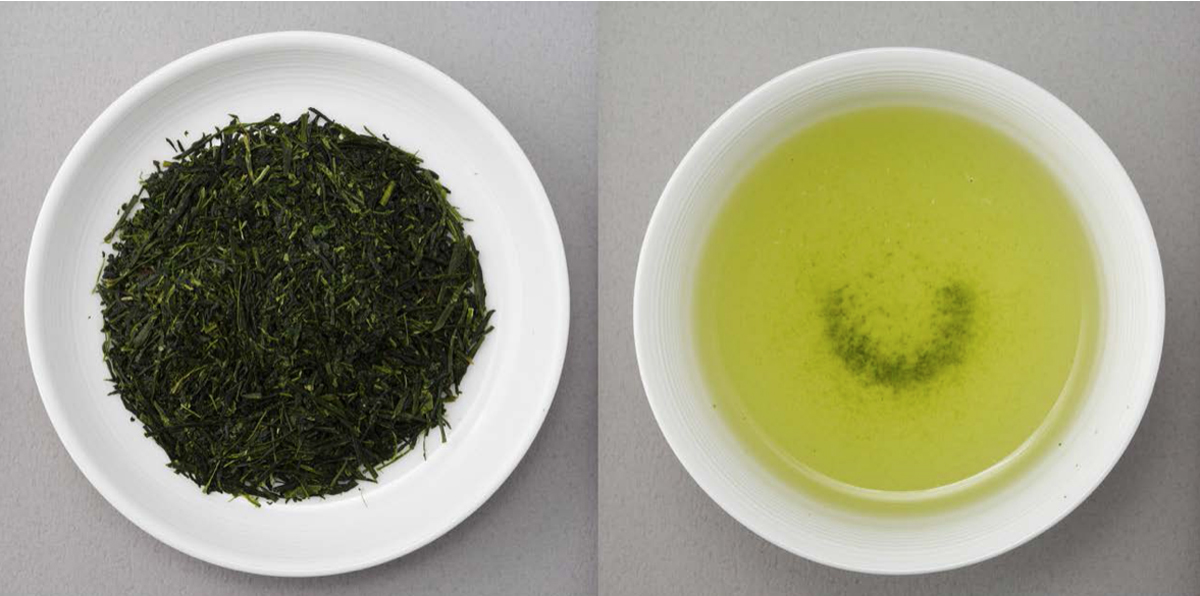
Bukubuku-cha, Okinawa Prefecture
Bukubuku-cha, which became popular in Naha, Okinawa, during the Meiji Period (1868 – 1912), appears as a tall mound of whitish foam in a tea bowl. There is a small amount of tea under the foam, but the foam itself is the main event, and this is first eaten with a spoon before drinking the tea beneath it. To make the foam, dry-roasted brown rice is boiled and the liquid drained off. Typically jasmine tea is added to this cooking liquid, with cafes in Naha nowadays experimenting with other flavours as well. The liquid is whipped with a large bamboo whisk to obtain a dense foam with a simple, fresh flavour.



